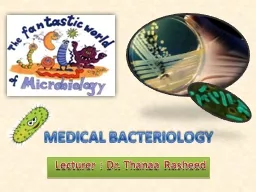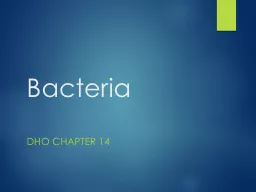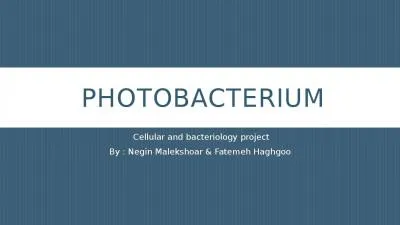PPT-Bacteriology Basic features of bacteria
Author : aaron | Published Date : 2018-03-08
Bacteria form a large group of parasitic saprophytic and freeliving microorganism 1 Bacterial cell wall protects against osmotic damage Bacterial cell
Presentation Embed Code
Download Presentation
Download Presentation The PPT/PDF document "Bacteriology Basic features of bac..." is the property of its rightful owner. Permission is granted to download and print the materials on this website for personal, non-commercial use only, and to display it on your personal computer provided you do not modify the materials and that you retain all copyright notices contained in the materials. By downloading content from our website, you accept the terms of this agreement.
Bacteriology Basic features of bacteria: Transcript
Download Rules Of Document
"Bacteriology Basic features of bacteria"The content belongs to its owner. You may download and print it for personal use, without modification, and keep all copyright notices. By downloading, you agree to these terms.
Related Documents

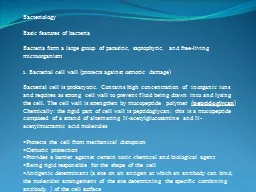

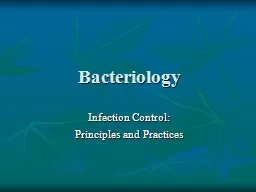


![SIFT features [3] were computed for 100 images (from](https://thumbs.docslides.com/562223/sift-features-3-were-computed-for-100-images-from-.jpg)
